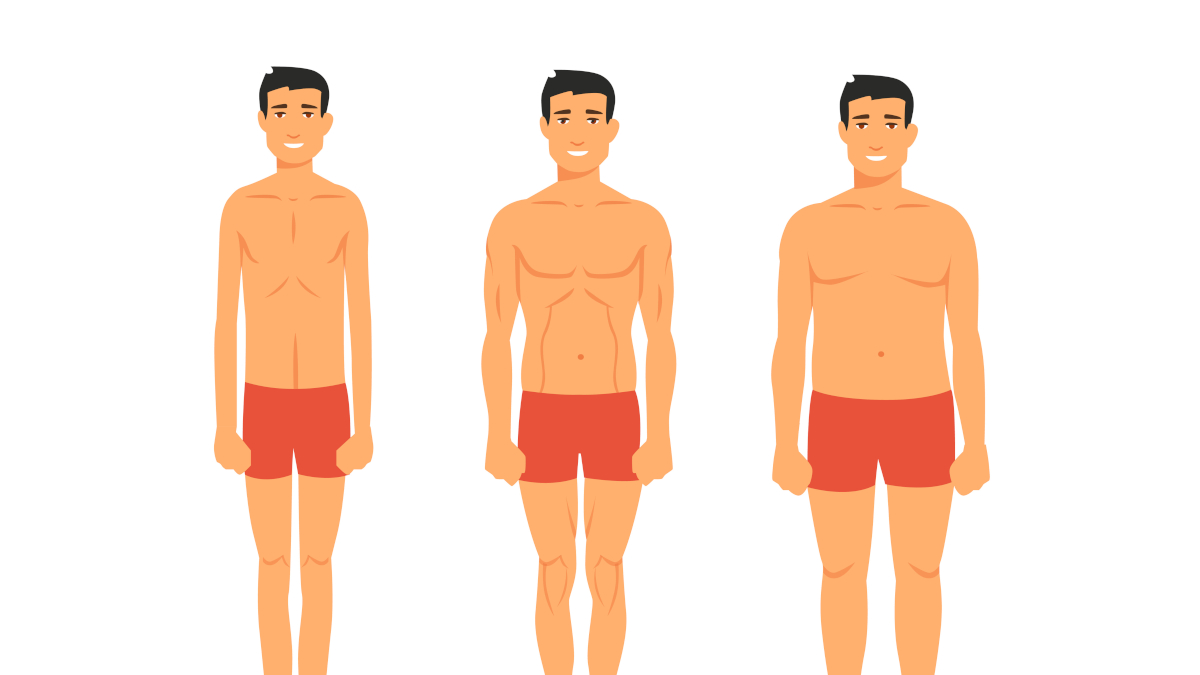
The following classification of different metabolism types is directly inspired by the morphotype theory of William Sheldon, an American doctor from the first half of the 20th century whose work has had a significant impact.
He believed that we are all biologically determined before birth, hence the use of terms borrowed from embryology in his classification. Essentially, his theory was that (1):
But William Sheldon didn’t stop there: he believed these morphotypes or somatotypes to be associated with the following behavioural characteristics:
This concept has similarities with the Ayurvedic theory of 3 doshas: vata (which would correspond to the ectomorph), pitta (which would correspond to the mesomorph) and kapha (which would correspond to the endomorph), cf. see our blog article on these 3 doshas.
William Sheldon’s whole theory has since been rejected. On the one hand, it is now accepted that the behavioural and psychological aspect of his classification is absurd; no-one supports it anymore (2-3).
On the other, recent studies have shown that throughout life, we all exist in reality on a continuum between different morphotypes depending on our muscle mass, fat mass, stress levels, etc. (4)
We therefore need to remember that determinism has no place here and that there are definitely ways of optimising your metabolism, promoting muscle gain or fat loss, stabilising your weight and improving your stress management.
Such methods rely on exercise, diet, meditation, psychological support and selected dietary supplements.
According to William Sheldon’s classification, an ectomorph is thin with minimal muscle.
Even though his theory is outdated, it’s undeniable that this description does indeed correspond to reality for many individuals.
However, the problem arises when you have an ectomorph physique and the metabolism that goes with it: however much you try to put on weight or to gain muscle, it simply doesn’t work.
This can mean several things:
Attention: weight-training increases your muscle mass and therefore your metabolism. So you’ll need to boost your calorie intake in order to continue gaining weight and muscle.
In William Sheldon’s classification as in real life, those categorised as mesomorphs are the lucky ones. They have a a well-balanced physique and a favourable metabolism which means they can be relaxed about what they eat without putting on weight.
So for mesomorphs, the challenge is primarily to remain stable, and to avoid tipping over into endomorph, or more rarely, ectomorph, territory (the body more naturally tends towards endomorphism).
There are three possible ways of ensuring this:
That just leaves the endomorphs, who gain weight easily and lack tone and energy. By definition, there’s a discrepancy between their metabolic rate and their energy intake which means they can quickly tip over into obesity.
Since the 1990s, scientists have been studying the role played by a specific hormone called leptin in the mechanisms governing obesity (9).
In short, when cells contain too much fat, they produce leptin in order to signal to the brain to stop taking in food and storing fat.
While diet is undoubtedly the main cause of obesity, it also seems that eating too much sugar and fat eventually causes leptin receptors to lose their sensitivity. Overcoming obesity then becomes very difficult.
Consequently, the ways in which you can compensate for an endomorph-type metabolism are as follows:
The keto diet, high in fat, produces rapid weight loss. Here’s a quick rundown of what you need to know before launching into a diet of this kind.
Lipolysis is the body’s mechanism for breaking down fats to make them absorbable and usable. There are two types: gastrointestinal lipolysis, which takes place during digestion, and adipocyte lipolysis, concerned with stored fat, which is often referred to as ‘fat-burning’. How can you use it to help achieve your slimming goals?
It’s been said that it cleanses and detoxifies the body, burns fat and suppresses the appetite … In short, it’s credited with many benefits, due in particular to its high content of powerful flavonoids called catechins. But can green tea really help you lose weight?
Prone to cravings? Unable to control your sweet tooth? Discover the best natural appetite-suppressants for effortlessly curbing your hunger pangs.
Milk, dark, white, fruity or spiced chocolate … What are the pros and cons of chocolate in terms of our health? Which type should you choose and which should you avoid?
If you’re overweight or have developed a paunch, you’re probably suffering from chronic inflammation of your adipose tissue. This is a silent pathological process which sooner or later will become a ticking time bomb, so it makes sense to read up on the latest findings and take action fast.







